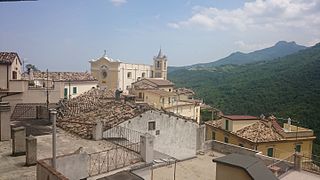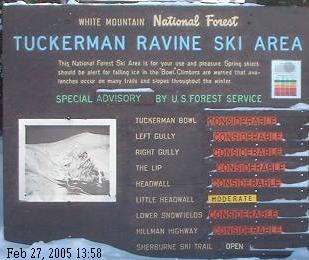
Uruguayan Air Force Flight 571 was the chartered flight of a Fairchild FH-227D from Montevideo, Uruguay, to Santiago, Chile, that crashed in the Andes mountains on 13 October 1972. The accident and subsequent survival became known as the Andes flight disaster and the Miracle of the Andes.

The Salang Pass is the primary mountain pass connecting northern Afghanistan with Parwan Province, with onward connections to Kabul Province, southern Afghanistan. Located on the border of Parwan Province and Baghlan Province, it is just to the East of the Kushan Pass, and both of them were of great importance in early times as they provided the most direct connections between the Kabul region with northern Afghanistan or Tokharistan. The Salang River originates nearby and flows south.

The Galtür avalanche occurred on 23 February 1999 in the Alpine village of Galtür, Austria. At 50 m (160 ft) high and traveling at 290 km/h (180 mph), the powder avalanche overturned cars, destroyed buildings and buried 57 people. By the time rescue crews managed to arrive, 31 people had died. It was considered the worst Alpine avalanche in 40 years. Three major weather systems originating from the Atlantic accounted for large snowfalls totaling around four meters in the area. Freeze-thaw conditions created a weak layer on top of an existing snow pack; further snow was then deposited on top. This, coupled with high wind speeds, created large snow drifts and caused roughly 170,000 tons of snow to be deposited.

The Dyatlov Pass incident is an event in which nine Soviet hikers died in the northern Ural Mountains between February 1 and 2, 1959, under uncertain circumstances. The experienced trekking group from the Ural Polytechnical Institute, led by Igor Dyatlov, had established a camp on the eastern slopes of Kholat Syakhl in the Russian SFSR of the Soviet Union. Overnight, something caused them to cut their way out of their tent and flee the campsite while inadequately dressed for the heavy snowfall and subzero temperatures.

Farindola is a comune and town in the province of Pescara in the Abruzzo region of Italy. It is located in the Gran Sasso e Monti della Laga National Park.

The 1990 Luzon earthquake occurred on July 16 at 4:26 p.m. (PDT) or 3:26 p.m. (PST) on the densely populated island of Luzon in the Philippines. The shock had a surface-wave magnitude of 7.8 and produced a 125 km-long ground rupture that stretched from Dingalan, Aurora to Kayapa, Nueva Vizcaya. The event was a result of strike-slip movements along the Philippine Fault and the Digdig Fault within the Philippine Fault System. The earthquake's epicenter was near the town of Rizal, Nueva Ecija, northeast of Cabanatuan. An estimated 1,621 people were killed, most of the fatalities located in Central Luzon and the Cordillera region.

The Blons avalanches took place in Austria in January 1954. They occurred in the federal state of Vorarlberg, where they had a big impact on the Great Walser Valley region and specifically, the village of Blons. The avalanches occurred over a two-day period beginning from 11 January 1954 and resulted in the death of 125 people, 57 of whom were killed specifically in Blons. Two big avalanches struck Blons within 9 hours, the second of which buried rescue workers who were attempting to save civilians from the first avalanche. The avalanches caused much destruction to the Blons village, damaging one third of housing infrastructure and killing one third of the population. The Blons avalanches are considered to be one of the worst mass burials in Austrian history, resulting in one of the highest number of fatalities due to an avalanche.

Mount Hood climbing accidents are incidents related to mountain climbing or hiking on Oregon's Mount Hood. As of 2007, about 10,000 people attempt to climb the mountain each year. As of May 2002, more than 130 people are known to have died climbing Mount Hood since records have been kept. One of the worst climbing accidents occurred in 1986, when seven high school students and two teachers froze to death while attempting to retreat from a storm.

The Iran blizzard of February 1972 was the deadliest blizzard in history, as recorded by the Guinness Book of Records. A week-long period of low temperatures and severe winter storms, lasting 3–9 February 1972, resulted in the deaths of over 4,000 people. Storms dumped more than 7.9 metres of snow across rural areas in northwestern, central and southern Iran. The blizzard came after four years of drought.

Avalanche rescue involves locating and retrieving people who have been buried in avalanches.

The 2009 Schalfkogel avalanche was an avalanche which occurred in Sölden, Austria, on 2 May 2009. Six people were killed, five Czechs and one Slovak, when the disaster struck in the 3,500-metre (11,500 ft) Schalfkogel mountain range. The corpses were discovered to have been frozen upon recovery. It was the deadliest avalanche to have occurred in Austria since March 2000. Although avalanches are a regular occurrence in the region, they mainly kill individuals as opposed to entire groups.

The 2010 Salang avalanches consisted of a series of at least 36 avalanches that struck the southern approach to the Salang Tunnel, north of Kabul. They were caused by a freak storm in the Hindu Kush mountains.

The 2011 Van earthquakes occurred in eastern Turkey near the city of Van. The first earthquake happened on 23 October at 13:41 local time. The shock had a magnitude of 7.1 and a maximum Mercalli intensity of VIII (Severe). It occurred at a shallow depth, causing heavy shaking across much of eastern Turkey and lighter tremors across neighboring parts of the South Caucasus and Levant. According to Disaster and Emergency Management Presidency on 30 October, the earthquake killed 604 and injured 4,152. At least 11,232 buildings sustained damage in the region, 6,017 of which were found to be uninhabitable. The uninhabitable homes left as much as 8,321 households with an average household population of around 7.6 homeless in the province; this could mean that at least around 60,000 people were left homeless. The other 5,215 have been damaged but are habitable. A separate earthquake within the same earthquake system happened on 9 November at 21:23 local time. 38 people were killed and 260 people were injured in the 9 November earthquake.
On March 4, 2012, at least three avalanches struck the Badakhshan province of northeastern Afghanistan. One of those avalanches destroyed a small village of about 200 people. The name of the village is uncertain; some sources call it Dasty and locate it in Darzab District, and others call it Sherin Nazim and locate it in Shekay District. Two other villages were affected by the avalanche. At least 50 people were killed in the disaster.

The 2015 Afghanistan avalanches were a series of devastating snow avalanches that occurred in late February 2015 across northeastern Afghanistan, primarily affecting four provinces. The hardest hit was Panjshir Province, where entire villages were buried under the snow. The disaster claimed the lives of up to 308 people, making it one of the deadliest avalanches in Afghanistan's history. The avalanches also impacted Parwan Province, causing widespread destruction and further complicating rescue efforts in the remote, mountainous regions.

White Friday occurred during the Italian front of World War I. The most significant avalanche struck the Austro-Hungarian barracks on Mount Marmolada, killing 270 soldiers. Other avalanches on the same day would strike Italian and other Austro-Hungarian positions, killing hundreds. According to some reports, both sides deliberately fired shells into the weakened snowpacks in an attempt to bury the other side.
Events during the year 2017 in Italy.

A series of four major earthquakes struck Central Italy between Abruzzo, Lazio, the Marche and Umbria regions on 18 January 2017.
Ghisberto is an Italian political cartoonist. He has been described as a right-wing populist for his cartoons, which attack left-wing politicians and immigrants.
In January 2020, at least 74 people were killed and several others were injured in Neelum Valley, Azad Kashmir, Pakistan, after a series of avalanches triggered by heavy snowfall destroyed and buried houses.
















